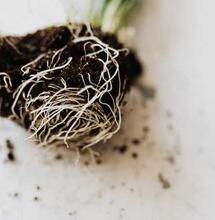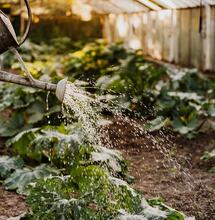Why your plants need Phosphorous.

Phosphorus is essential to plant health, and so, like Nitrogen, it is required by the plant in large amounts. Phosphorous is present in every living plant cell. It is involved in many essential plant functions, including energy transfer, photosynthesis, transformation of sugars and starches, nutrient movement around the plant and the transfer of genetic characteristics from one generation to the next.
In contrast to Nitrogen, the atmosphere does not provide phosphorous; instead, it originates mainly from organic sources and primary and secondary minerals via the phosphorous cycle. In comparison to Nitrogen, the phosphorous concentration in the soil is much lower. It can vary massively due to many factors.
In an indoor growing environment, most of your phosphorus will come from your nutrient feed. It is needed in the highest amounts during germination, seedling, and flowering stages. Phosphorous is the "P" in your NPK, and so the ratios will be displayed on every bottle you use. If you follow the directions, you shouldn't go far wrong. However, all plants are different and depending on what you are growing; you may find that it needs a little more or less phosphorous than you are using.
Phosphorous deficiency is more likely to occur in plants grown in an indoor environment as they are kept under intense light. This is because phosphorous is used in photosynthesis. The rate of photosynthesis is higher under a powerful artificial light source. So the phosphorous gets used up quickly. If your temperatures are below 60F, your plants will struggle to take up Phosphorous. Other factors for inducing deficiencies can include incorrect pH levels and overwatering so that nutrients leach out of the growing media.
Symptoms of phosphorous deficiency include darkening of old leaves, new leaves growing much smaller in size, and a variety of leaf abnormalities, including thickening, spot forming and yellowing, curling, mottling and burning of tips. The plant itself may show signs of discolouration, most noticeably red or purple, as well as stunted or abnormal growth in both stems and flowers/fruits. Plants with a Phosphorous deficiency commonly have root problems, so there may be signs of root rot, mould, root disease or more susceptibility to pest infestation. A phosphorous deficiency is easily identified if only the parts exposed to direct light are affected, and the rest of the plant appears to be ok.
Most fertilisers and feed formulas designed for use on plants grown indoors carry an extra amount of phosphorous anyway due to the rate at which phosphorous is used up for photosynthesis under the intense lights. Any bloom fertiliser or booster product should assist in correcting the balance and levelling out any other nutrient deficiencies that may be lurking around un-detected.
Mycorrhiza is a valuable tool to use to prevent a deficiency as it can help increase phosphorous uptake. Guano is also an excellent natural fertiliser as it is very high in phosphorous. You can also try increasing your temperatures above 60F so that the phosphorous is more easily absorbed.
Check regularly that your pH is between 5.5-6.2. If your pH is too high, the nutrient salts will prevent your plant from absorbing the optimum phosphorous levels. To get your pH where it should be, you will need to flush your whole system with a feed solution at the correct pH until the desired level is achieved.



.png)



